1. Start Small
Last year I had one of the most amazing paraprofessionals I had ever met. Mrs. B was kind, exuberant, and radiated joy. As a grandmother to 3 toddlers, she often brought these “grandma tendencies” into the classroom. This woman could wipe a nose with one hand and zip up backpacks with the other. She was nothing short of wonder woman.
I noticed how the students were slowly beginning to depend on Mrs. B’s generosity. I told her how grateful I was to have her help, but it was time we had an independence makeover.
The first few weeks weren’t easy. I watched as Mrs. B would reach out to put away a child’s notebook and quickly draw her hand back, offering an encouraging, “you can do this!” or “where does this go?”
While it might save us some time zipping up jackets and cleaning up supplies, these are things the students should be attempting on their own. If the student is unable to do so right now, provide the least intrusive means of prompting and work toward that independence. Taking the time now to teach these skills is going to benefit our students in the long run.
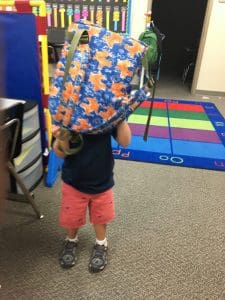
Sometimes backpacks make nice hats before they make their way to the coat rack.
2. Independent Stations are a Game Changer
I’ve been doing independent stations in my classroom for three years now. Here are a few tips to setting up a successful independent work station:
• Have materials ready and accessible for the students. This includes dry erase markers, clothes pins, visuals, and any other required supplies. I found this pocket chart on Amazon, which is a great way to organize small pieces and visuals.
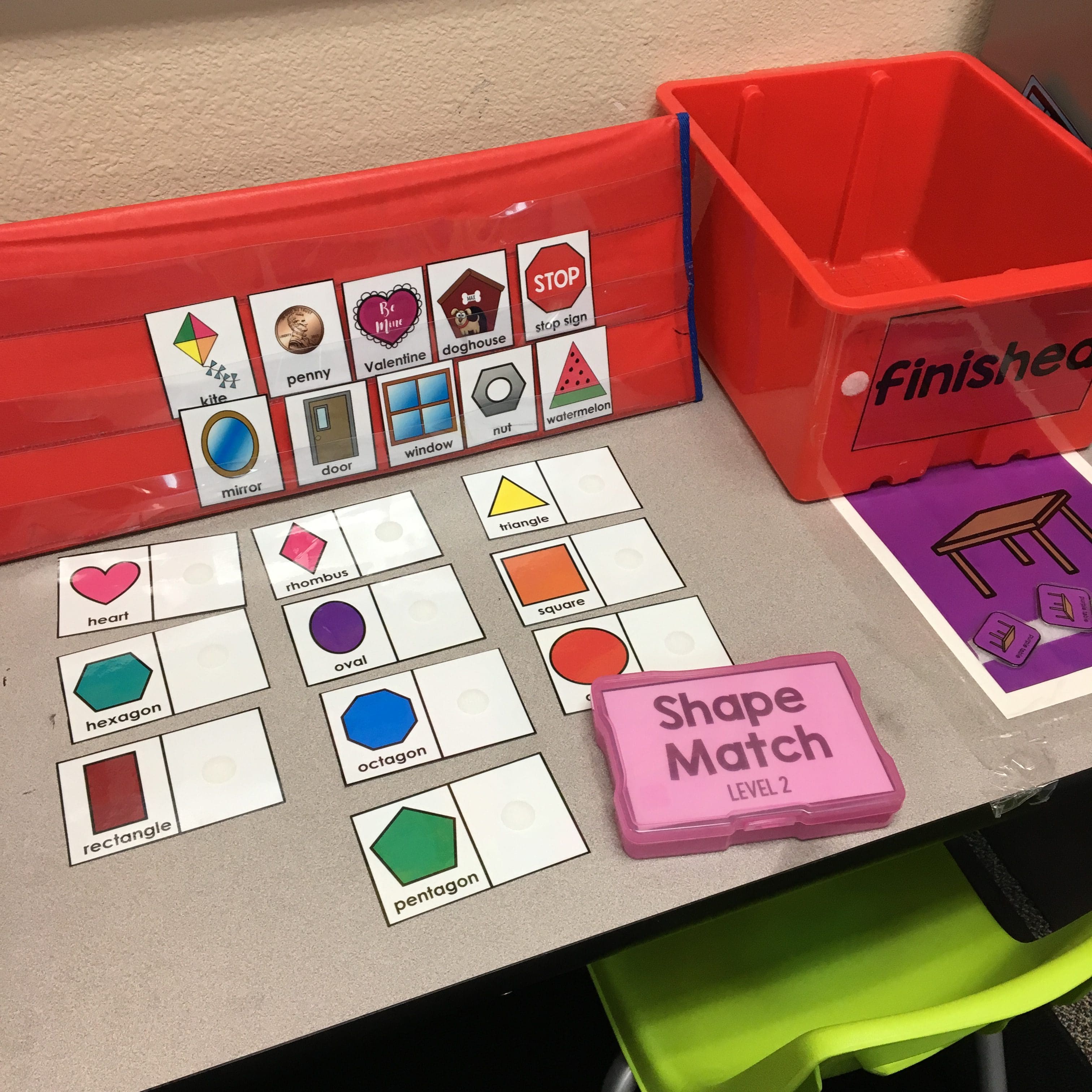
• Designate a section of the room for this station. I have a desk with a 3-drawer bin of activities.
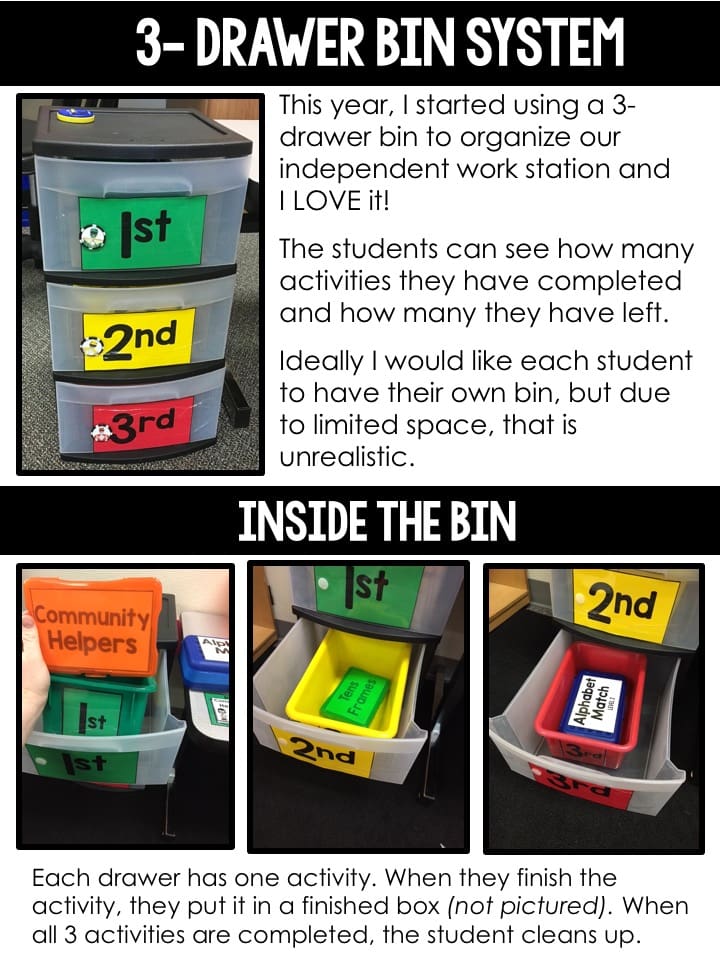
• Activities and routines must be pre-taught before a student will be successful. While starting out, I focus more on teaching the routine and expectations more than the academic concepts. Check out free task box activities here.
• Independent does not mean unsupported. Many of my students still require assistance from a teacher during this station. For some of my students, I have a paraprofessional sit one-on-one with the student, providing prompts as needed. For my more advanced students, I periodically check in with them during our 15 minute station rotation. (Verbally or passing by).
3. Reinforce Often
We use token boards in my classroom, where the students earn tokens for being on task, completing work assignments, or when they are exhibiting expected behaviors. The students then redeem the tokens for a short break before they get back to work.
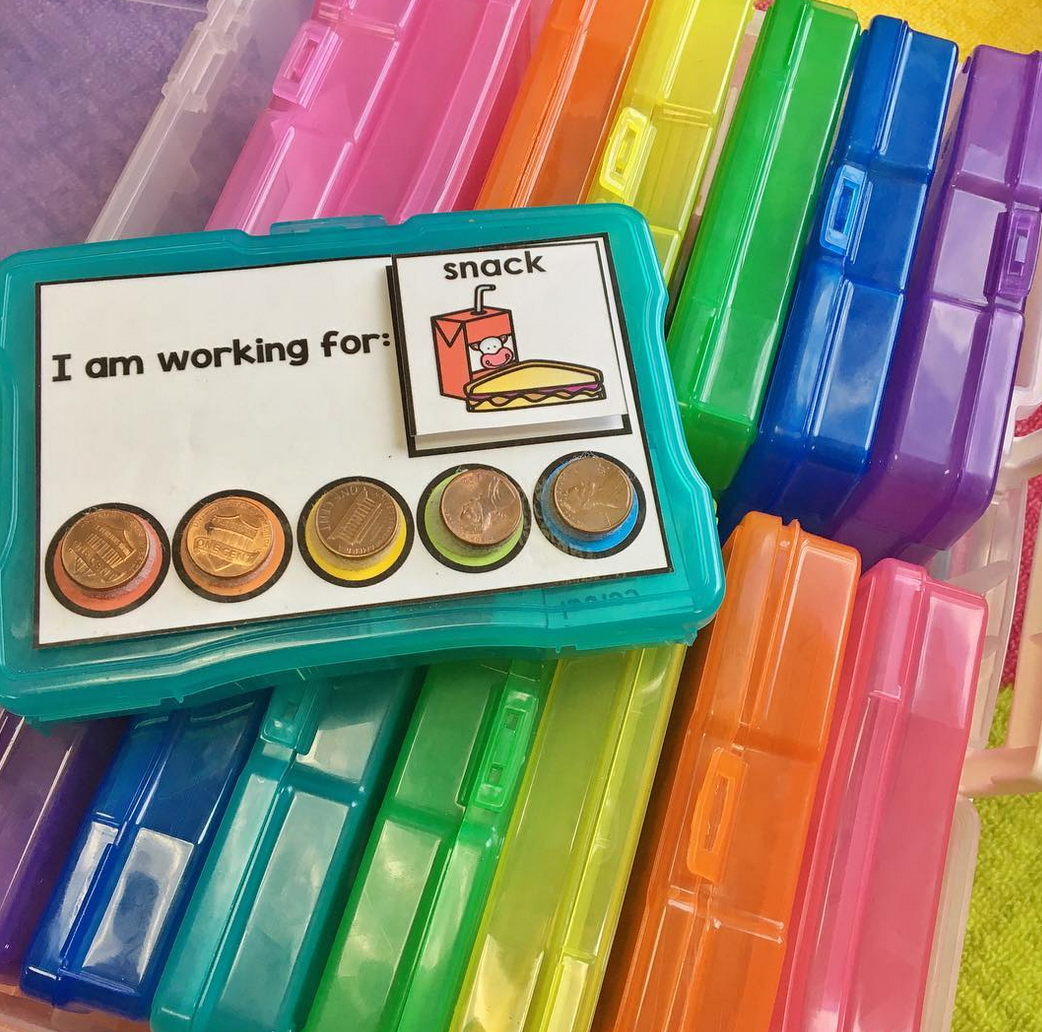
Teaching independence, as with any learned skill, must be reinforced frequently. When first teaching my independent station, I doled out tokens for just about everything.
“Thank you for sitting in your chair! Token on!”
“Way to open drawer #1! Token on!”
However, as students acquired these independent skills, I was able to scale back the reinforcement. After months of practice, many of my students now control their own token boards at the independent work station, earning a token for each completed task.
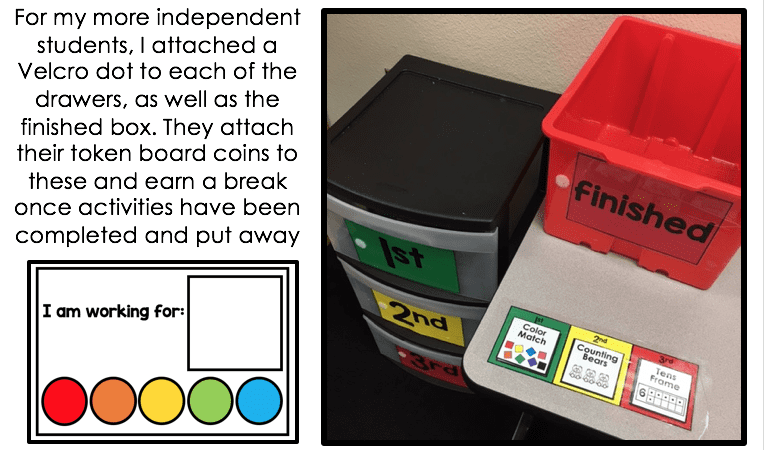
While there is not one-size-fits-all routine for instilling independence, these are just a few tricks I have learned over the last few years. What strategies have you found that help teach independent skills?
Thanks for stopping by!
Michaela

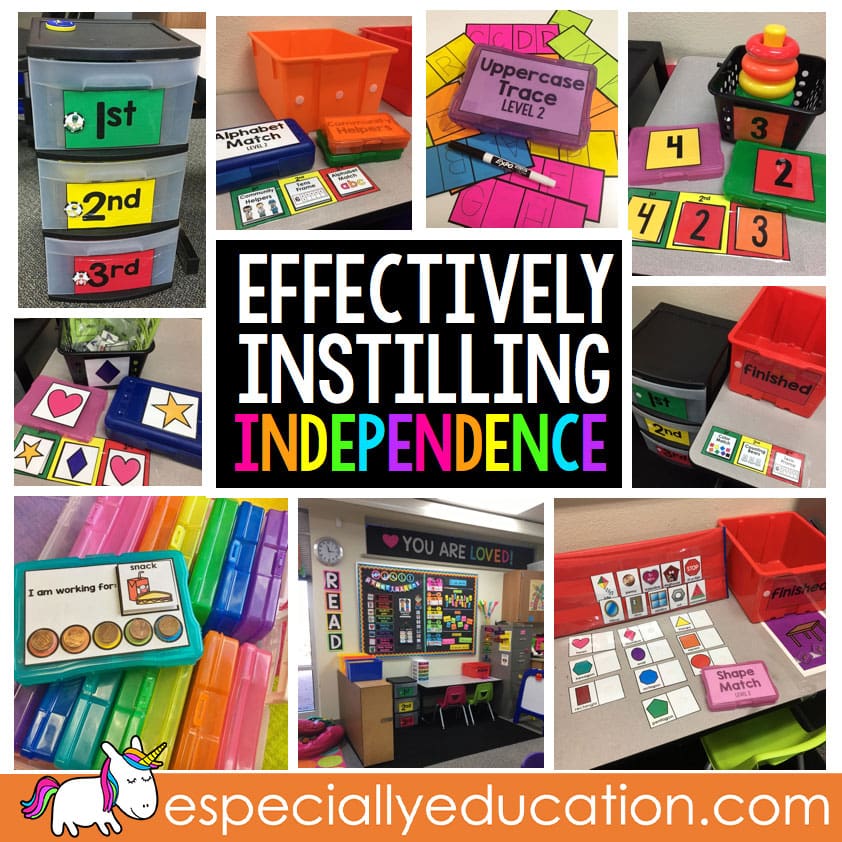
Sara says
The colored containers that you used to attach your “I am working for” board to, where are they from???
Erika says
Do you have the task card available? Also where did you get those small boxes?
Allie says
Love your system.
Where did you buy the small bosses for your task cards?
Allie
Allie says
I meant boxes
Wendy Kellogg says
They look like the picture boxes I bought at Michael’s Crafts- on sale a set of 12 small boxes that fit into the large box will run about $15 (instead of $42!). You can also get them from Amazon- search for ‘Recollections Color Photo & Craft Keeper’.
Michaela Davis says
Thank you, Wendy!
Lori Turner says
Michael’s has them on sale for $10!
Lindsay Leahy says
HI Michaela,
K-3 self-contained autism teacher from VA. I see you have a purple table label and then smaller pictures. Do you have each table colored and then the smaller pieces are for students schedule? I run centers and would like to implement a more independent transition instead of my verbal prompts of who goes with who each rotation. Do you use songs and visual schedule for center rotations? It will be myself and IA/para so I would like to do an independent station and maybe tech time with computer or tablet.
Thanks!!!
Jeanine says
I absolutely love all these ideas! I am just started the whole virtual learning at home with my 11 yo with anxiety, attention, & speech delays & other issues. We both have a difficult time sitting still, completing tasks, & “staying on task” I know it seems late in her years, but I don’t believe it’s ever too late to make these types of independence reinforcements anywhere any age! Thank you again as I will use these ideas in our own special ways in the home/home classroom setting.
Michaela Davis says
Thank you!
Janie Denton says
How did you make the 1st, 2nd, 3rd drawer/task labels?
Michaela Lawrence says
Hi Janie! These are included in my task box downloads!
Teagan says
Thanks so much for this blog. Just getting started and it really helps! I am having a hard time wrapping my head around the process of a student finishing their work at the station and the next student coming. Does the teacher or para quickly go in and put in new tasks? Or do you have multiple students work in there? Thanks!
Michaela Lawrence says
Hi Teagan! Thank you for your question. We have so many teachers in our Facebook group who are generous with their tips and tricks and have a broad range of experience to share. Please join our community! https://www.facebook.com/groups/madeformeliteracy/